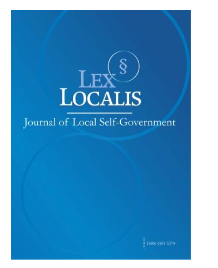LEVERAGING IOT AND AI FOR SMART HEALTH MONITORING: A PATHWAY TO ENHANCING ADOLESCENT WELL-BEING IN EDUCATIONAL ENVIRONMENTS
DOI:
https://doi.org/10.52152/ar5b6q91Keywords:
Smart Health Monitoring; Internet of Things (IoT); Artificial Intelligence (AI); Adolescent Well-Being; Educational EnvironmentsAbstract
In the evolving landscape of digital healthcare, integrating Internet of Things (IoT) and Artificial Intelligence (AI) technologies has opened new possibilities for real-time health monitoring, particularly within adolescent populations in educational environments. Adolescence is a critical developmental period marked by significant physical, psychological, and behavioral changes. Given the increasing incidence of stress, anxiety, sedentary lifestyle habits, and undiagnosed chronic conditions among school-going youth, it is imperative to develop systems that can monitor, detect, and respond to early signs of health anomalies in a non-intrusive, intelligent manner. This study presents a comprehensive framework for a smart health monitoring system that leverages IoT-enabled wearable devices and AI-powered analytics to track key physiological and behavioral parameters among adolescents in schools and colleges. The proposed system captures real-time data such as heart rate, oxygen saturation, body temperature, sleep patterns, and activity levels using lightweight sensors embedded in wearables. These data streams are transmitted to a secure cloud infrastructure, where advanced AI algorithms—such as anomaly detection models, machine learning classifiers, and predictive health scoring—process the data to identify potential risks or abnormalities. The framework emphasizes early detection of physical health issues like fatigue, infections, and cardiac irregularities, as well as mental health indicators such as stress and anxiety levels inferred through heart rate variability and activity irregularities. This proactive approach enables school health authorities and caregivers to initiate timely interventions while maintaining data privacy and ethical considerations. The system also incorporates a feedback loop where students receive personalized health insights and wellness suggestions via a mobile application, fostering awareness and self-regulation. The research includes the development and field-testing of a prototype across three educational institutions involving 250 adolescent participants over four months. Quantitative results show improved health tracking accuracy, reduction in unreported health incidents, and positive feedback from both students and school administrators regarding system usability and impact.
Furthermore, qualitative assessments revealed enhanced student engagement with personal health and improved parental confidence in school-based health management. This work demonstrates how an AI-IoT synergy can be instrumental in transforming adolescent health monitoring from a reactive to a predictive and preventive paradigm. By embedding such technologies into educational ecosystems, institutions can not only safeguard physical and mental well-being but also contribute to a more holistic, health-oriented learning environment that supports academic and personal development.
Downloads
Published
Issue
Section
License
Copyright (c) 2025 Lex localis - Journal of Local Self-Government

This work is licensed under a Creative Commons Attribution-NonCommercial-NoDerivatives 4.0 International License.







